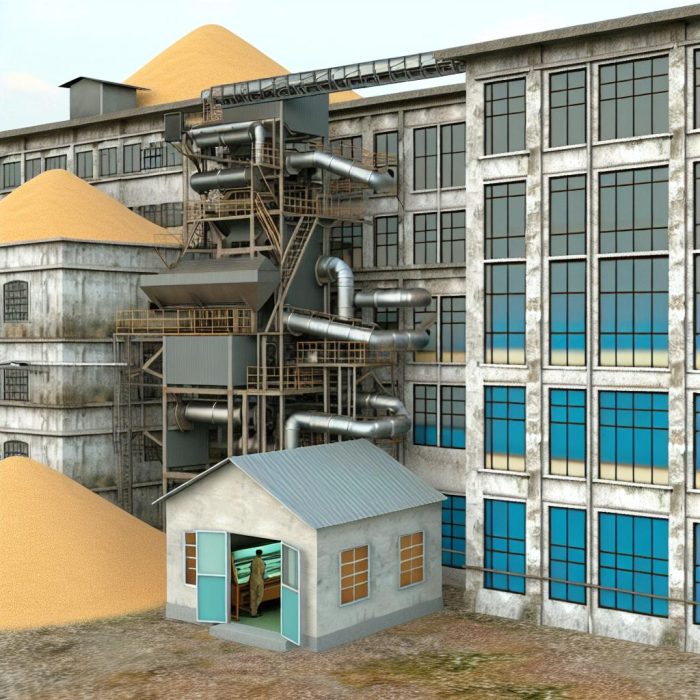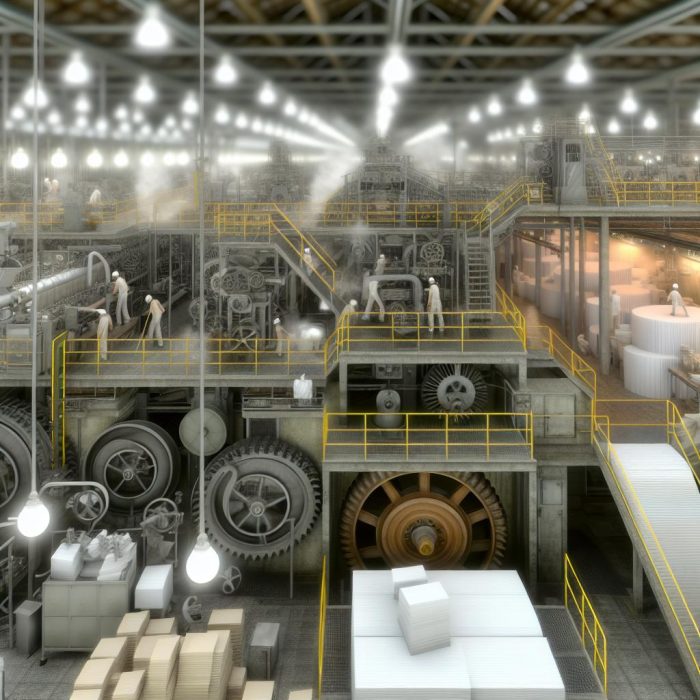The Evolution of Steel Mills
Steel mills have played a crucial role in industrialization since the 19th century. These facilities transform raw materials, such as iron ore, coal, and limestone, into steel—a material central to building infrastructure, manufacturing vehicles, and developing machinery. Over the years, steel mills have evolved significantly to incorporate advanced technologies that enhance efficiency and reduce environmental impact.
Processes in Steel Mills
The production of steel is a complex operation typically divided into three main processes: ironmaking, steelmaking, and rolling and finishing. Each of these processes involves key technologies and methods that have been developed and refined over time to maximize efficiency and quality.
Ironmaking
Ironmaking is the first step in the steel production cycle. The primary objective in this stage is the extraction of usable iron from iron ore. This extraction is generally performed in a blast furnace, a towering structure where the ore is subjected to high temperatures along with coke and limestone. This combination not only facilitates the separation of iron from other elements but also results in molten iron, ready for the subsequent phase of steelmaking.
Steelmaking
Once iron has been extracted, it is then transformed into steel during the steelmaking process. This transformation is typically achieved in a basic oxygen furnace (BOF) or an electric arc furnace (EAF). In these furnaces, various impurities are meticulously removed, and desired alloying elements are added to produce steel that meets specific quality and compositional standards. The exact methodology may vary, but the fundamental goal is the same: to produce steel with qualities suitable for its intended use.
Rolling and Finishing
The final stage in steel production involves shaping the raw steel into desired forms. Through processes such as hot rolling, cold rolling, and coating, the steel is fashioned into sheets, bars, or structural elements. These products are then ready for application in various industries, from construction to automotive manufacturing. Each technique imparts particular characteristics to the final product, such as tensile strength, flexibility, and corrosion resistance.
Technological Advancements
In recent decades, steel mills have seen a surge in technological advancements that have transformed traditional production methods. These modernizations include the use of automation, improved furnace design, and new energy-efficient practices. The aim of these innovations is to increase productivity, reduce waste, and substantially improve the quality of the final product.
Automation
The introduction of automation in steel mills has revolutionized the production process. The use of computers, sensors, and machine learning tools to streamline these processes enhances precision and minimizes human error. This technology not only leads to increased output but also fosters safer working environments by reducing the need for direct human interaction with hazardous processes.
Environmental Considerations
The steel industry is making notable efforts to address environmental concerns, focusing on reducing its environmental footprint. Modern practices are aimed at decreasing carbon dioxide (CO2) emissions and increasing the recycling of steel. Innovations like carbon capture and storage (CCS) and the development of “green steel,” which involves using renewable energy sources, have gained considerable attention. These practices are integral to meeting global sustainability goals and reducing the industry’s impact on the planet.
Global Steel Production
Steel production is a globally significant activity, with major contributions coming from countries including China, India, and the United States. The global demand for steel is closely linked to economic growth, infrastructure projects, and advancements in technology sectors. Yet, as the industry grows, maintaining a balance between production levels and sustainable practices remains a chief concern and focus.
The Role of China
China stands out as the world’s largest producer of steel, contributing more than half of the total global production. The rapid industrial growth in China has driven the expansion of its steel industry, significantly affecting global steel prices and market trends. China’s influence on the steel sector cannot be overstated, as it plays a pivotal role in shaping global supply chains and determining industry standards.
The Future of Steel Mills
Looking ahead, several factors are expected to shape the future of steel mills, prominently featuring sustainability initiatives, technological innovations, and fluctuating global demand.
Sustainable Practices
Sustainability will become an increasingly important consideration in steel production. As environmental regulations become stricter and societal awareness grows, efforts to reduce carbon footprints and optimize recycling processes are likely to define industry practices and priorities. The integration of sustainable methods is not merely an obligation but an essential step towards ensuring the industry’s long-term viability.
Technological Evolution
The continuous development of technologies such as artificial intelligence and machine learning is anticipated to drive further efficiency improvements in steel mills. These future advancements hold the potential to optimize production processes, enhance quality control, and reduce overall production costs. The evolution of steel mills will likely feature enhanced predictive models, real-time optimization tools, and greater connectivity across the supply chain.
For a deeper exploration of the steel mill industry, you may wish to consult additional resources available at the World Steel Association. This source provides comprehensive insights into the industry’s latest developments and future directions, including emerging trends and innovations poised to shape the years ahead.



